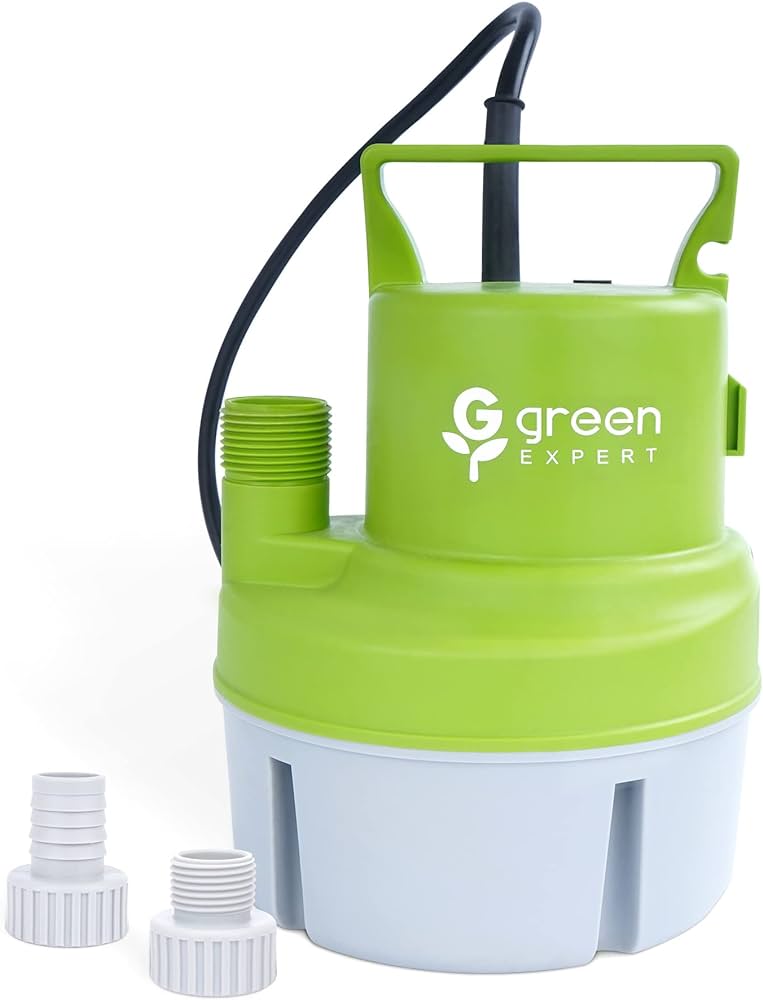It may take a long time to drain your water heater if there is a significant build-up of minerals and sediment within the tank. Unclogging the water heater can help with the flushing process.
If you find yourself struggling to drain your water heater, it is likely due to the accumulation of minerals and sediment inside the tank. This is a common issue for many homeowners. Fortunately, there are several methods you can try to unclog the water heater and overcome this problem.
By understanding the reasons behind the slow draining and implementing the appropriate solutions, you can ensure a smooth and efficient flushing process for your water heater.
Common Culprits Behind Slow Drainage
If you’re wondering why it’s taking so long to drain your water heater, it could be due to a buildup of minerals and sediment in the tank. This is a common issue that can be resolved by unclogging the water heater with a few simple steps.
Sediment And Mineral Buildup
One of the most common culprits behind slow drainage in water heaters is sediment and mineral buildup. Over time, minerals and sediments like calcium, magnesium, and sand can accumulate at the bottom of the tank, clogging the drainage system. This buildup not only reduces the efficiency of the water heater but also prolongs the draining process.
Issues With The Drain Valve
Another factor that can contribute to slow drainage is issues with the drain valve. The drain valve is responsible for releasing water from the tank during the flushing process. If the drain valve is faulty or partially closed, it can impede the flow of water and slow down the draining process. It’s important to ensure that the drain valve is fully open and functioning properly to facilitate faster drainage.
Low-pressure Scenarios
In some cases, low water pressure can also be a cause of slow drainage in water heaters. When the water pressure is low, it can prevent the efficient flushing of water from the tank. This can be due to various reasons such as a partially closed water shut-off valve, a clogged or restricted water supply line, or problems with the overall water pressure in your area. Checking and addressing any issues with water pressure can help speed up the drainage process.
Blocked Or Clogged Drainage Hoses
In addition to sediment buildup and issues with the drain valve, blocked or clogged drainage hoses can also contribute to slow drainage. The drainage hose is responsible for carrying the flushed water out of the tank. If the hose is kinked, clogged with debris, or damaged, it can hinder the flow of water and make the draining process slower. Inspecting the drainage hose and ensuring it is clear and undamaged can help improve drainage speed.
In conclusion, several common culprits can lead to slow drainage in water heaters. Sediment and mineral buildup, issues with the drain valve, low-pressure scenarios, and blocked or clogged drainage hoses can all contribute to this problem. Addressing these issues through regular maintenance and cleaning can help maintain the efficiency of your water heater and ensure faster drainage.

Credit: discoverplumbingandrooter.com
Diagnosing Your Draining Dilemma
Why is it taking so long to drain your water heater? If you’re facing this issue, it could be due to various reasons. Identifying the cause of the problem is the first step towards finding a solution. Let’s explore some common culprits that might be causing your draining dilemma:
Identifying Sediment Or Scale Presence
One of the most common reasons for a slow-draining water heater is the presence of sediment or scale buildup. Over time, minerals and debris accumulate at the bottom of the tank, creating a layer of sediment. This sediment can clog the drain valve, making it difficult for the water to flow out efficiently.
To diagnose if sediment or scale is causing the issue, follow these steps:
- Place a bucket underneath the drain valve.
- Open the drain valve slowly.
- If the water flows out slowly or is discolored, there is a high chance that sediment or scale is present.
Assessing Drain Valve Functionality
The drain valve, located near the bottom of the water heater, plays a crucial role in the draining process. If the valve is faulty or partially closed, it can impede water flow and prolong the time it takes to drain the tank.
To check the functionality of the drain valve, follow these steps:
- Ensure the water heater is turned off and the power supply is disconnected.
- Attach a garden hose to the drain valve.
- Open the valve and observe the water flow.
- If the flow is weak or nonexistent, the drain valve may be faulty and in need of replacement.
Pressure Relief Valve Inspection
The pressure relief valve is designed to release excess pressure from the water heater. However, it can also contribute to draining issues if it is not functioning correctly. A faulty pressure relief valve can create a backflow of hot water, making it challenging to empty the tank.
To inspect the pressure relief valve, follow these steps:
- Turn off the power supply to the water heater.
- Place a bucket underneath the pressure relief valve.
- Flip the valve’s lever to open it and release any pressure.
- If water continues to flow or the valve does not open, it may need to be replaced.
By following these steps to diagnose sediment or scale presence, assess drain valve functionality, and inspect the pressure relief valve, you can identify the cause of your slow-draining water heater. Once the issue is pinpointed, appropriate measures can be taken to resolve the problem and ensure optimal performance.
Streamlining The Drain Process
When it comes to draining a water heater, you may encounter issues that make the process longer than expected. However, there are several strategies you can implement to streamline the drain process and ensure it is completed efficiently. In this section, we will explore three key techniques: pre-drain flushing, enhancing flow with hot water line detachment, and pressure relief valve strategy.
Pre-drain Flushing Techniques
One effective method to expedite the draining process is by implementing pre-drain flushing techniques. Before opening the drain valve, it is crucial to remove any sediment or scale build-up that might hinder proper water flow. Start by attaching a hose to the water heater drain valve and direct it into a nearby floor drain or outside. Then, turn on the cold water supply briefly to flush out any debris.
Once the initial flush is complete, close the drain valve and repeat the process several times until the water runs clear. This pre-drain flushing technique helps to eliminate blockages and ensures a smoother and quicker drain.
Enhancing Flow With Hot Water Line Detachment
If you find that your water heater is draining slowly, detaching the hot water line can significantly enhance the flow. Before doing so, ensure the cold water supply is turned off and allow the tank to cool for a considerable amount of time. This step is essential to avoid scalding injuries.
After it has cooled, attach a hose to the water heater’s drain valve and direct it into a suitable drainage location. Open the drain valve and let the water flow. Then, disconnect the hot water line from the heater. This step enables air to enter the tank, facilitating faster and more efficient drainage.
Pressure Relief Valve Strategy
Another useful strategy to streamline the drain process is by employing the pressure relief valve. This valve, typically located on the top or side of the water heater, helps alleviate any potential pressure build-up during the draining procedure. Before opening the drain valve, simply lift or open the pressure relief valve to release any excess pressure.
By implementing this strategy, you ensure that the drain valve remains unobstructed and expedites the flow of water out of the tank. It is essential to exercise caution when dealing with the pressure relief valve to prevent injuries caused by hot water.
Immediate Fixes And Prevention
If you’re wondering why it’s taking forever to drain your water heater, it could be due to a buildup of minerals and sediment in the tank. Fortunately, there are some ways to unclog your water heater and get it flushing properly again.
Alternative Methods For Sediment Removal
If your water heater is taking an unusually long time to drain, it may be due to a substantial buildup of minerals and sediment. Fortunately, there are alternative methods you can try to help remove these deposits and improve the drainage:
- Backflushing: This method involves attaching a hose to the hot water outlet and directing the water back into the drain valve. By creating reverse water flow, you can dislodge and flush out sediment more effectively.
- Vinegar Soak: Another effective method is to drain the tank partially and then fill it with vinegar. Let the vinegar sit overnight, allowing it to dissolve the mineral deposits. In the morning, drain the tank completely and flush it with clean water.
- Power Flushing: Consider using a power flushing kit or hiring a professional plumber to perform a high-pressure flush. This method uses pressurized water to forcefully remove stubborn sediment.
Replacing Faulty Valves
Another reason for slow drainage could be a faulty drain valve. If the valve is not fully opening or closing properly, it can impede the flow of water. In some cases, the valve may be worn out or damaged, requiring replacement. Here’s what you can do:
- Turn off the power supply to the water heater.
- Attach a garden hose to the drain valve and direct the other end to a suitable drainage area.
- Slowly open the drain valve to see if water flows freely. If it does not, the valve may need to be replaced.
- Purchase a new drain valve that matches the specifications of your particular water heater model.
- Follow the manufacturer’s instructions to install the new valve, ensuring it is tightly secured and properly sealed.
Routine Maintenance For Sediment Prevention
Prevention is always better than cure when it comes to sediment buildup in your water heater. By performing regular maintenance, you can minimize the likelihood of slow drainage and prolong the lifespan of your water heater. Here’s what you should do:
- Flush the tank annually: Draining and flushing the tank at least once a year helps remove any accumulated sediment, preventing buildup and improving the efficiency of your water heater.
- Inspect and test the pressure relief valve: Ensure that the pressure relief valve is in good working condition. Test it periodically to make sure it releases properly. If the valve is faulty, consider replacing it.
- Install a sediment filter: Adding a sediment filter to the water supply line can help trap and prevent sediment from entering the water heater, reducing the chances of clogs and slow drainage.
- Check the anode rod: The anode rod helps prevent corrosion within the tank. Regularly inspect and replace it if necessary, as a corroded anode rod can contribute to sediment buildup.
By implementing these alternative methods for sediment removal, replacing faulty valves, and performing routine maintenance, you can address slow drainage issues in your water heater and ensure it operates efficiently for years to come.
Why Draining Your Heater May Drag On
If you’re wondering why it’s taking so long to drain your water heater, it could be due to a buildup of minerals and sediment in the tank. This common issue can cause clogs, but there are ways to help unclog and speed up the draining process.
Step-by-step Guide For Speedier Drainage
If you’re facing the frustrating issue of a slow-draining water heater, don’t worry; there are steps you can take to speed up the process. By following this step-by-step guide, you’ll be able to drain your water heater more efficiently:- Turn off the power supply – Before starting the draining process, make sure to turn off the power supply to your water heater. This will prevent any accidents or electrical hazards.
- Attach a garden hose – Next, locate the drain valve on your water heater and attach a garden hose to it. Ensure that the hose is securely fastened to prevent any leaks.
- Open the drain valve – Once the hose is attached, open the drain valve to allow the water to flow out. Be patient, as sediment and minerals may cause the water to drain slowly.
- Flush the system – To help speed up the drainage process, you can use a flushing kit or attach a hose to the cold-water supply valve. This will create a higher flow of water and push out any remaining sediment.
- Close the drain valve – After the water has completely drained, close the drain valve and remove the hose.
- Refill and restart – Once the draining process is complete, you can refill your water heater by turning on the cold-water supply valve. Remember to also turn on the power supply and wait for the water to heat up before using hot water again.
Tools And Accessories To Facilitate The Process
| Tool/Accessory | Description |
|---|---|
| Everbilt Brass Drain Valve | A durable and reliable drain valve that allows for easy and efficient water flow control during the draining process. |
| Utilitech Water Heater Drain Valve | A high-quality drain valve that ensures a secure and leak-free connection between the water heater and the draining hose. |
| EASTMAN Water Heater Runoff Tube | A flexible and durable tube that directs the drained water away from the water heater, preventing any potential water damage. |
| Forestchill Universal Flexible Drain Pipe Hose | A versatile and adaptable drain pipe hose that fits various water heater models and allows for easy attachment and detachment. |
| Rannb Pvc Water Drain Pipe Hose | A cost-effective and reliable drain pipe hose made from durable PVC material, suitable for efficient water drainage. |
| Little Giant Condensate Removal Pump | A powerful pump that assists in draining the water heater by effectively removing excess water and preventing any clogging issues. |
Professional Versus Diy Approaches And When To Seek Help
While draining the water heater can be a DIY task, there are instances where seeking professional help may be necessary. Consider the following situations:- Complex plumbing systems – If your plumbing system is complex, with multiple water heaters or intricate piping, it is advisable to consult a professional to ensure the draining process is done correctly.
- Lack of experience – If you have limited experience with plumbing tasks or are unsure about the steps involved, it is safer to hire a professional. They have the knowledge and expertise to handle the draining process efficiently.
- Time constraints – If you’re short on time or have a busy schedule, hiring a professional can save you valuable time and effort. They can complete the draining process quickly and efficiently, allowing you to focus on other tasks.
Frequently Asked Questions Of Why Is It Taking So Long To Drain My Water Heater
Why Is It Taking So Long To Drain My Hot Water Tank?
It may take a long time to drain your hot water tank if there is a large buildup of minerals and sediment inside. This is a common issue for homeowners, but there are ways to unclog a water heater and help it flush properly.
How Long Should It Take To Drain A Water Heater?
The time it takes to drain a water heater varies depending on the size of the unit and the rate at which the water can exit through the drain valve. Factors such as sediment buildup can also slow down the process.
How Can I Make My Water Heater Drain Faster?
To make your water heater drain faster, follow these steps: 1. Turn off the cold water feed after a few minutes of running. 2. Let it drain for a few minutes. 3. Open the pressure relief valve and disconnect the hot water line to allow air in faster.
This will help unclog any built-up minerals and sediment, improving draining efficiency.
What Happens If Water Heater Is Not Drained?
If a water heater is not drained, sediment and minerals can build up, hampering its performance and damaging both the heater and the plumbing system. Flushing the water heater regularly is important to prevent these issues.
Conclusion
A slow-draining water heater is often caused by a buildup of minerals and sediment in the tank. This is a common issue faced by homeowners, but there are solutions available to help unclog the heater and restore its functionality. By following proper draining techniques and considering the size and capacity of your water heater, you can ensure a more efficient draining process.
Remember, regular maintenance and flushing can help prevent future issues and prolong the lifespan of your water heater.

I am a Water Heater specialist writer and blogger based in the USA & UK. I have been working with Water Heater for six long years. And I give trips on various Water Heater problems and solutions. I have a lot of experience with Water Heater And I share them here

